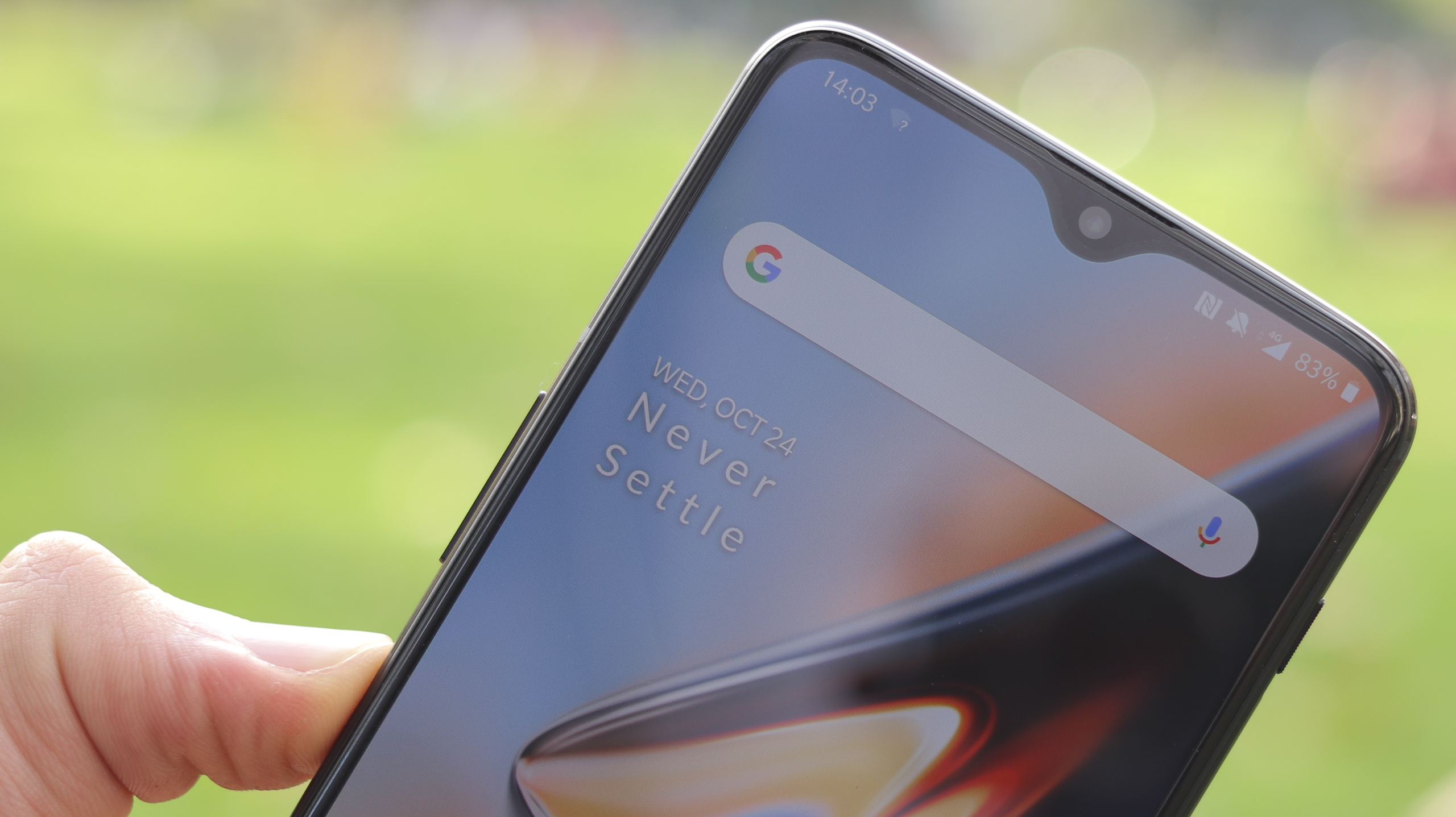
Following the OnePlus 6’s massive success, OnePlus has now introduced the OnePlus 6T (starting at Rs. 37,999) worldwide. Much like other T-series devices, the OnePlus 6T is a minor upgrade, with just a few new features in almost the same chassis.
Priced at Rs. 37,999 here in India, the OnePlus 6T is again slightly more expensive than its predecessor. But is the upgrade worth it? I had the chance to use the device as my daily driver a week before the launch, and I’m here to answer that.
OnePlus 6T Specifications
As mentioned, the OnePlus 6T is essentially a minor upgrade from its predecessor, the OnePlus 6, with mostly identical hardware. Here are the complete specifications:
| Dimensions and Weight | 157.5 x 74.8 x 8.2mm, 185g |
| Display | 6.41-inch Optic AMOLED 2340x1080p, 19.5:9 aspect ratio, Gorilla Glass 6 |
| Processor | Qualcomm Snapdragon 845 |
| RAM | 6/8GB LPDDR4X |
| Storage | 128GB/256GB |
| Rear Cameras | 16MP+20MP f/1.7 with OIS and EIS |
| Front Camera | 16MP f/2.0 with EIS |
| Battery | 3,700mAh with fast charge (5V/4A) |
| Software | OxygenOS based on Android 9 Pie |
| Connectivity | 802.11 a/b/g/n/ac 2x2MIMO dual band Wifi, Bluetooth 5.0, NFC, USB 2.0 Type-C |
| Sensors | In-display fingerprint, Hall, Accelerometer, Gyroscope, Proximity, Ambient Light, Electronic Compass |
| Colors | Mirror Black and Midnight Black |
What’s Inside the Box
The OnePlus 6T arrives in a standard white box from OnePlus, with a subtle marbled texture. Inside, you’ll find the expected accessories, including a translucent case and a USB Type-C to 3.5 mm headphone jack dongle.
- OnePlus 6T
- 5V/4A charging brick
- USB Type-A to USB Type-C cable
- USB Type-C to 3.5 mm headphone jack dongle
- Translucent protective case
- SIM ejector tool
- OnePlus stickers
- Paperwork
Design and Build Quality
Regarding design and build quality, OnePlus hasn’t significantly altered the OnePlus 6T. It measures 157.5 x 74.8 x 8.2 mm and weighs 185 g, slightly larger and heavier than its predecessor, allowing for a larger battery. The front features a 6.41-inch Optic AMOLED display with a smaller waterdrop notch, minimal side bezels, and a thinner bottom chin.
Neatly tucked into a small notch is the single front-facing camera, alongside the three-in-one ambient/distance/RGB sensor. The earpiece has been elevated within the slim top bezel. The device’s rear resembles the OnePlus 6, boasting a glossy Mirror Black finish (also available in Midnight Black), notorious for attracting fingerprints. It features the familiar vertically oriented dual camera setup with a dual-tone flash underneath.
The fingerprint scanner has moved from the back and now resides underneath the display up front. The device retains the curved glass back, which is comfortable to hold, and the button placement remains unchanged. The power button and alert slider remain on the right edge, while the volume rocker and SIM card tray are on the left edge.
The device’s top lacks ports and only features a secondary noise-canceling microphone, while the bottom is dominated by the USB Type-C port and two sets of speaker grills, one for symmetry and concealing the primary microphone. The OnePlus 6T lacks a 3.5mm headphone jack, as the company prioritized the in-display fingerprint scanner over it, despite fan preferences. The build quality is top-notch, and the device feels premium, as expected in this price range.
In essence, the OnePlus 6T maintains its predecessor’s design and build quality. If you admired the OnePlus 6, you’ll likely appreciate the OnePlus 6T. The absence of a headphone jack may disappoint some, but with a flourishing market for Bluetooth and USB Type-C accessories, it’s unlikely to deter many potential buyers. Notably, OnePlus has omitted an IP rating for water resistance, sticking with its designation as “daily water-resistant.”
Display
With a smaller waterdrop-style notch, the OnePlus 6T accommodates a larger 6.41-inch display. This display features the same Optic AMOLED panel found in the previous device, boasting a 2340 x 1080p resolution, 402ppi pixel density, and a 19.5:9 aspect ratio.
The display, shielded by Corning Gorilla Glass 6, resists scratches well, though I recommend using a screen protector for added precaution. Quality remains consistent; color reproduction, viewing angles, and brightness are excellent. Additionally, OnePlus’ software allows customizable color calibration to suit individual preferences. Night Mode and Reading Mode settings are also included, enhancing usability.
I liked the display on the OnePlus 6, so it’s natural I’d appreciate the OnePlus 6T’s display. With a smaller notch and consequently more room to play with, I’m a fan. Granted, the display on the OnePlus 6T isn’t as great as Samsung’s flagship devices, but considering the considerable price difference, the OnePlus 6T is just killing it.
Audio
The OnePlus 6T features a single bottom-firing speaker, which sounds pretty much the same as the one on the OnePlus 6. It’s loud, clear, and punchy, but suffers from the same problem that plagues all bottom-firing speakers – it gets muffled quite easily. The audio quality is decent, and I have no qualms about its performance.
The audio from the newly relocated earpiece is notably different. Positioned within a slight recess in the top bezel, it doesn’t rest directly on the ear like the earpiece on the OnePlus 6. This necessitated angling the phone slightly to hear the audio clearly. Despite this adjustment, the audio quality from the earpiece is decent, and I acclimated to the new position within just a couple of hours.
Cameras
The camera hardware on the OnePlus 6T remains unchanged, featuring the same 16MP f/1.7 + 20MP f/1.7 dual-camera setup at the rear and a 16MP f/2.0 selfie shooter upfront. The rear camera setup benefits from both OIS and EIS stabilization, while the front camera utilizes EIS alone. Now, let’s delve into some camera samples:
Stills
Though the OnePlus 6T employs the same camera sensors as its predecessors, OnePlus asserts it has improved camera performance through a new algorithm. This algorithm automatically adjusts both front and rear cameras to enhance image quality for commonly photographed scenes and objects. However, in my testing, the results were mixed.
- Performance in Artificial/Good Light
In good lighting conditions, the OnePlus 6T can capture impressive shots with detailed, vibrant colors and decent dynamic range. However, its performance varies considerably. Images taken in the same location under identical lighting conditions seconds apart can differ significantly, with one featuring ample detail and the other appearing soft. Here are some sample images to illustrate:

Pritam Chopra is a seasoned IT professional and a passionate blogger hailing from the dynamic realm of technology. With an insatiable curiosity for all things tech-related, Pritam has dedicated himself to exploring and unraveling the intricacies of the digital world.




